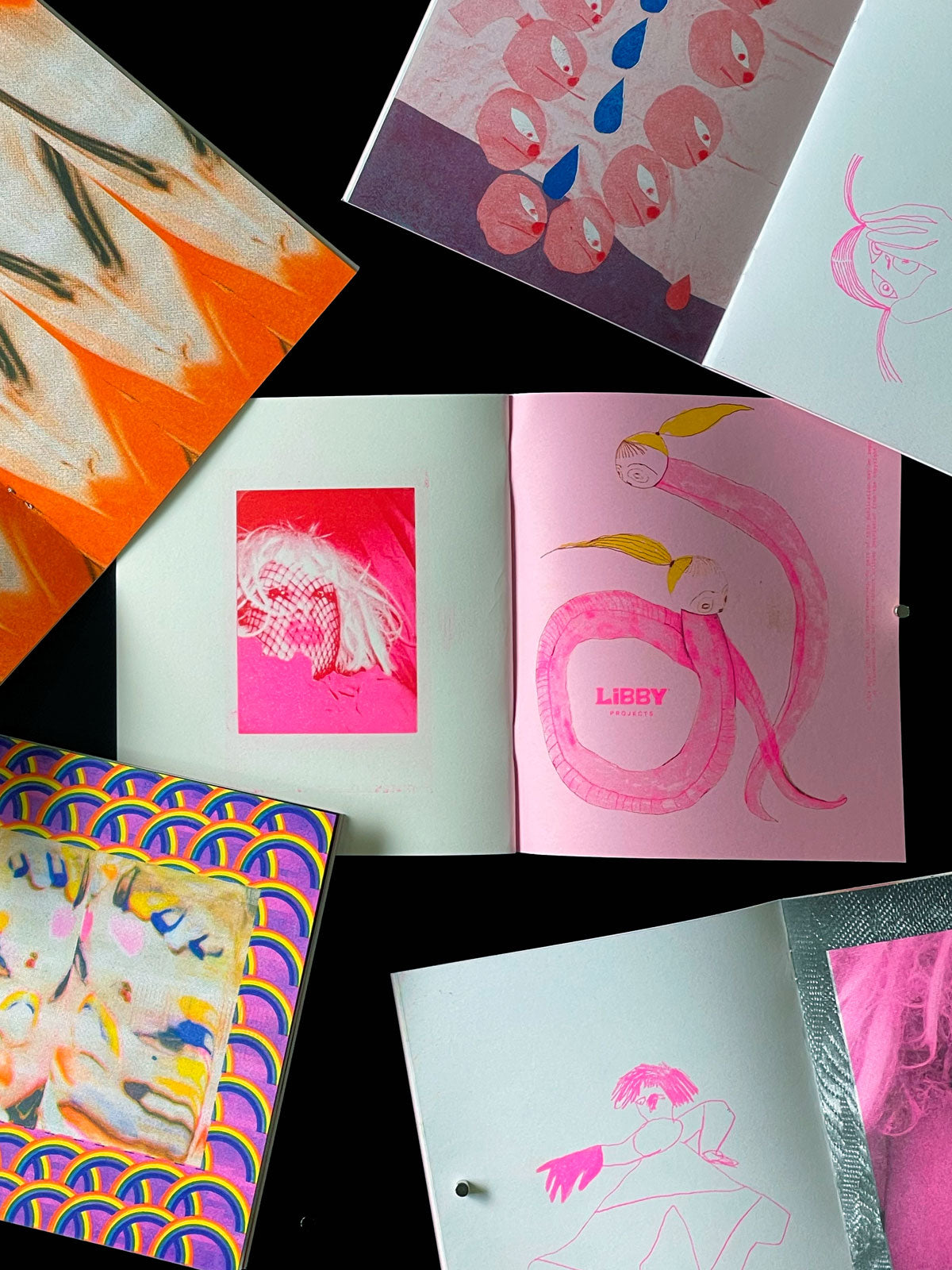The risograph's soy-based inks used are translucent, allowing them to overlay and create new colors when printed in layers. This technique results in a tactile appearance, often embraced for its imperfections.
Large blocks of color do not print out evenly. Consider decreasing opacity in these areas up to 20% or adding a texture into your design.
We stock 6 colors: Scarlet, Blue, Yellow, Kelly Green, Flo Pink, and Black. See the "Ink Colors" section for equivalent hex codes and Pantone colors.
We can print up to 8 x 14".
The Riso cannot print full bleed, you must account for a 1/4 inch boarder or consider trimming the final print.
The affordability of risograph printing makes it popular among independent artists, small publishers, and zine makers. Its charm lies in the handmade feel and the ability to produce visually appealing prints with a distinct, slightly imperfect quality.
Imperfections are common in this printing technique. Ink smudging, paper feeder roller marks, and wiggly registration are frequent with the Riso. Achieving perfection is challenging even for seasoned printers, but we strive for the best results.
To minimize imperfections, consider incorporating extra trapping in your design and reducing fill opacity to 80-90%. Embrace these unique quirks as characteristic as elements of the printing process.













